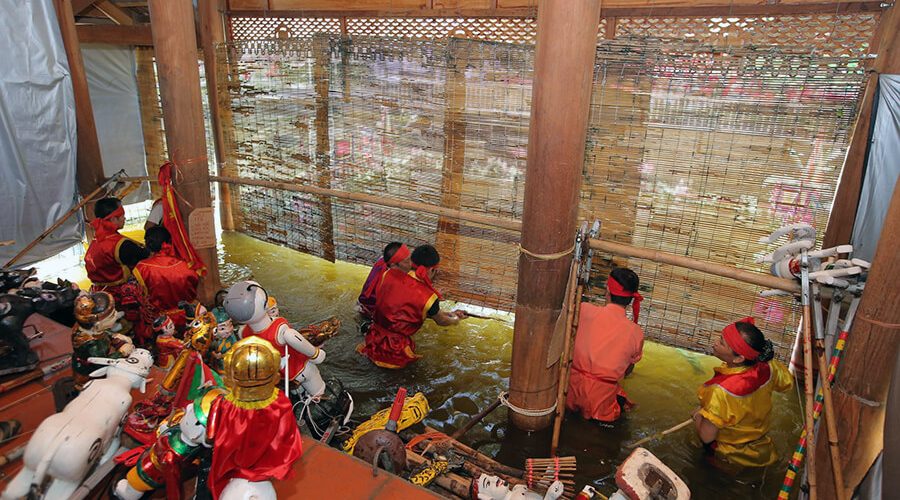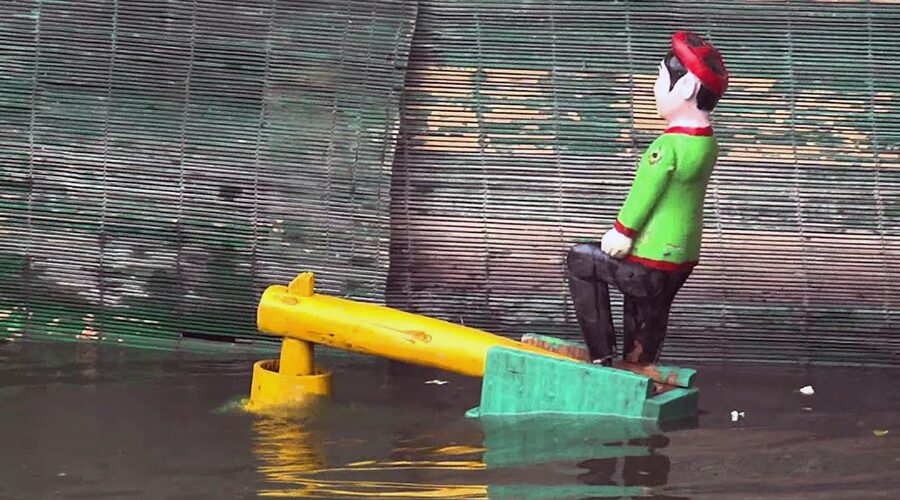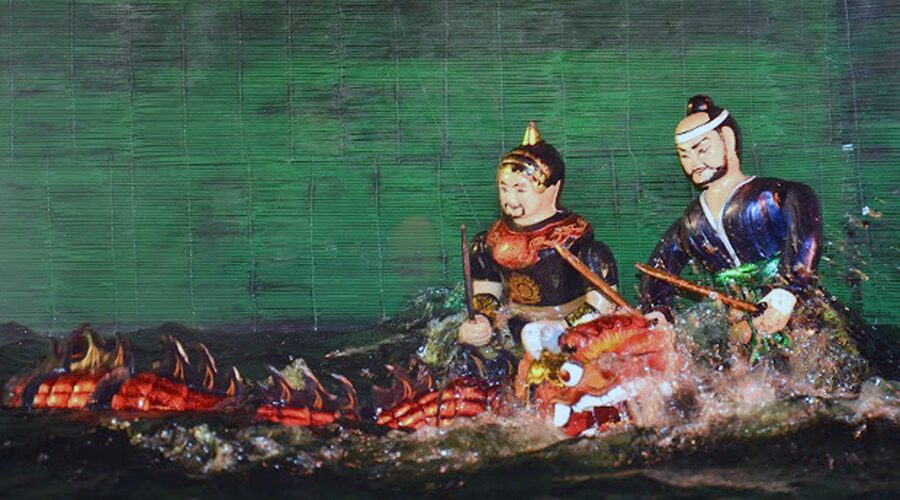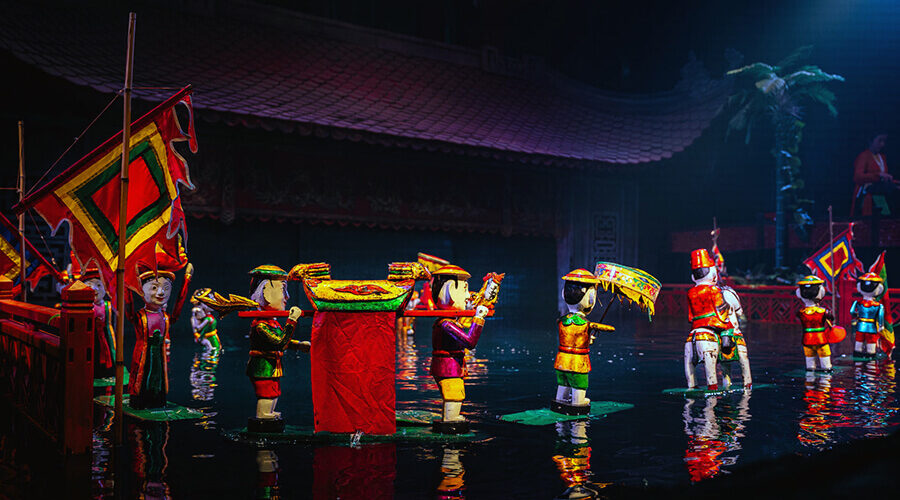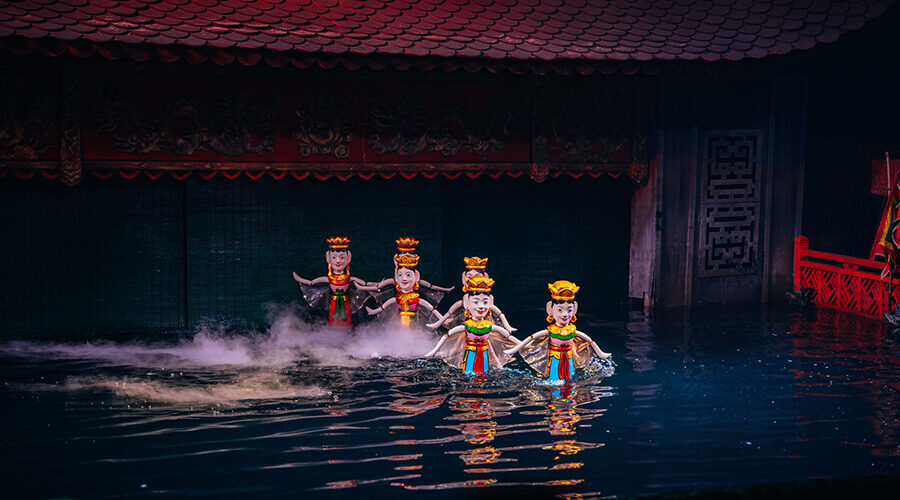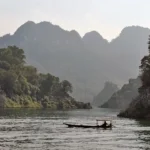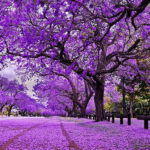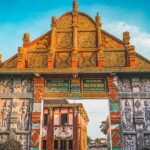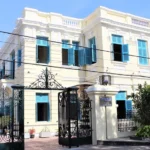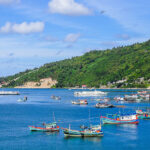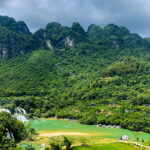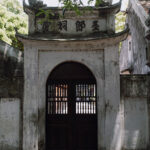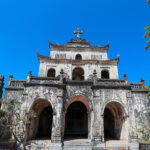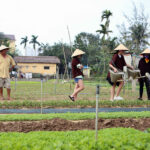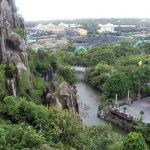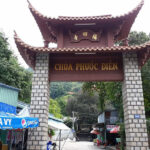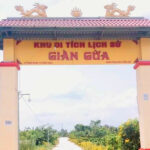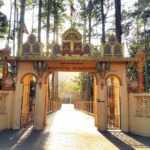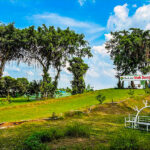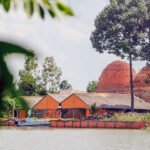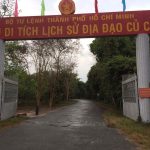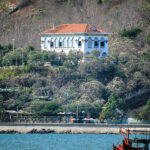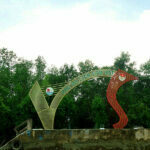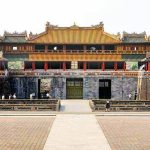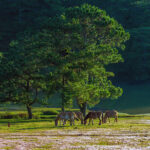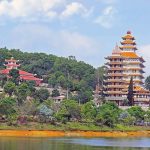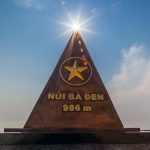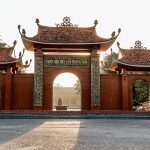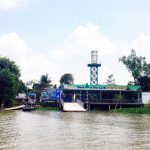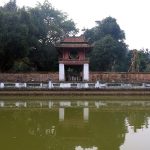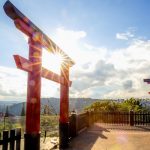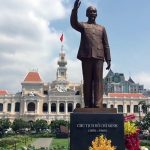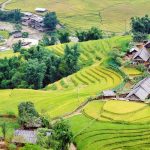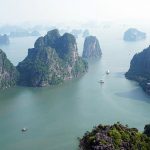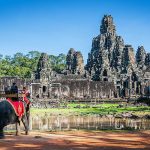Water puppetry is a unique and creative form of folk theater art imbued with the traditional culture of wet rice agriculture with the nuances and soul of Vietnamese people to reflect the quality of life and rusticity in a true way.
What is a Vietnam water puppet?
Water puppetry is the art of performing with puppets on the water, magically combining the two elements: puppet and water. The stage of the water puppet is the ponds and lakes of the rural villages. The stage is the grass around, very convenient for people to enjoy the show.
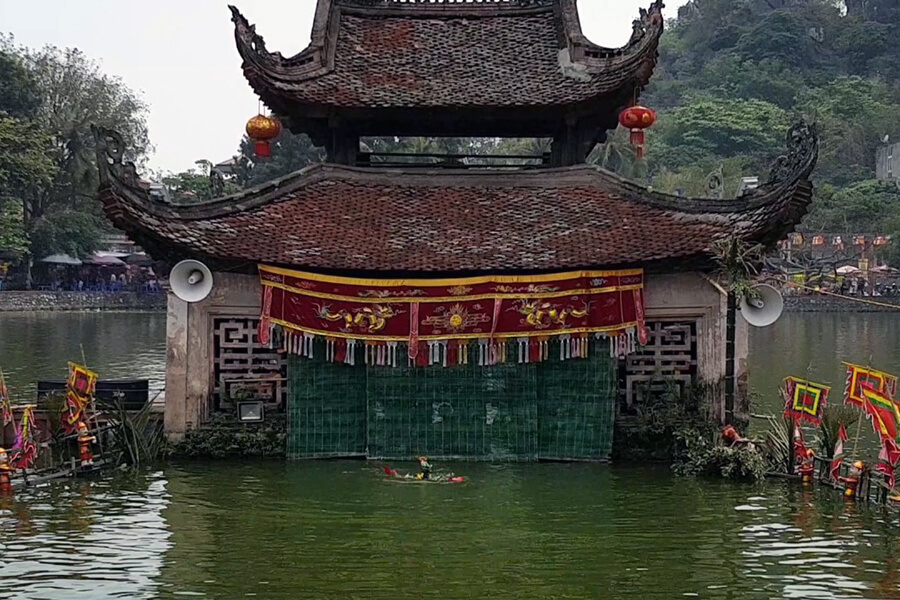
A popular stage of water puppetry
On the water is a two-story temple building, the upper floor is used to worship and the lower floor is the backstage with blinds. Unlike other types of performance, water puppet artists do not appear on stage. They stay in the water, hiding behind bamboo blinds, controlling puppets with a complex rod and wire system, requiring technical and sophisticated art.

backstage of water puppetry of the show
The puppets are made of wood, usually fig wood, some areas using because the fig wood is light, floats on water. They are exquisitely carved, splendidly painted with lacquer to make sure it will not discolor when exposed and impervious. Each puppet is a sculpture of artisans.

The water puppet army also includes people who plow, herd ducks, fish, collect firewood, and row boats; muscular wrestlers; The women who weave looms, pound rice and grind rice are simple and industrious; The old man and the old woman with gray hair and gentle skin; graceful dancer; funny and naughty children; The girl rocked a three-piece shirt, a peach blossom belt, a pink scarf, black hair tied in a ponytail, and a round face; evil enemies; to familiar animals of Vietnamese life such as big buffalo, fat cow, strong horse; a flock of cute ducklings; crowded schools of fish; and “The Four Scare Animal” – Dragon, Phoenix, Tortoise, Unicorn.

Water puppetry is an art of village festivals, containing and preserving many images of social activities, traditions, folk techniques, spiritual and material activities of the Vietnamese people in the history of building the country. The art of water puppetry carries with it both customs and traditions, and the formation of crafts such as carpentry, carving, sculpture, shaping…With typical value, Water Puppet Art was included in the List of National Intangible Cultural Heritage on September 4/ 2018.
History of the Vietnam water puppet show
Puppetry is a form of art that was born very early and appears in most countries around the world. In the 5th century BC in ancient Greece, people discovered the first traces of this art. The art of puppetry originates from games with the use of puppets to act out plays on stage. Based on the stage performance space, puppetry is divided into two types: Water puppetry and land puppetry.
However, water puppet shows are only found in Vietnam, conceived before the Ly dynasty in the Red River Delta. Under the Ly dynasty, this art form became sophisticated and from there until now. There are documents that identify in 1121 as a landmark where water puppetry became a popular art. It is Sung Thien Dien Linh stone stele (Choi Pagoda, Duy Tien, Nam Ha Province), recording the water puppet performance as an artistic ritual to celebrate the new age of the kings. Currently, in front of Thay Pagoda (Sai Son, Quoc Oai, Ha Tay, Hanoi), on Long Tri Lake, there is an almost intact relic of a water puppet stage built in the Le Dynasty.

Sung Thien Dien Linh stone stele (Choi Pagoda, Duy Tien, Nam Ha)
How does it play?
The stage uses water as a place for puppets to perform tricks and plays, which an unique feature of water puppetry art. On this stage, they often built-in props such as swings for swinging and bushes for duck hunting; some miniatures for the show. These objects arranges on both sides or outside the stage to avoid getting in the way of the pole machines operating.
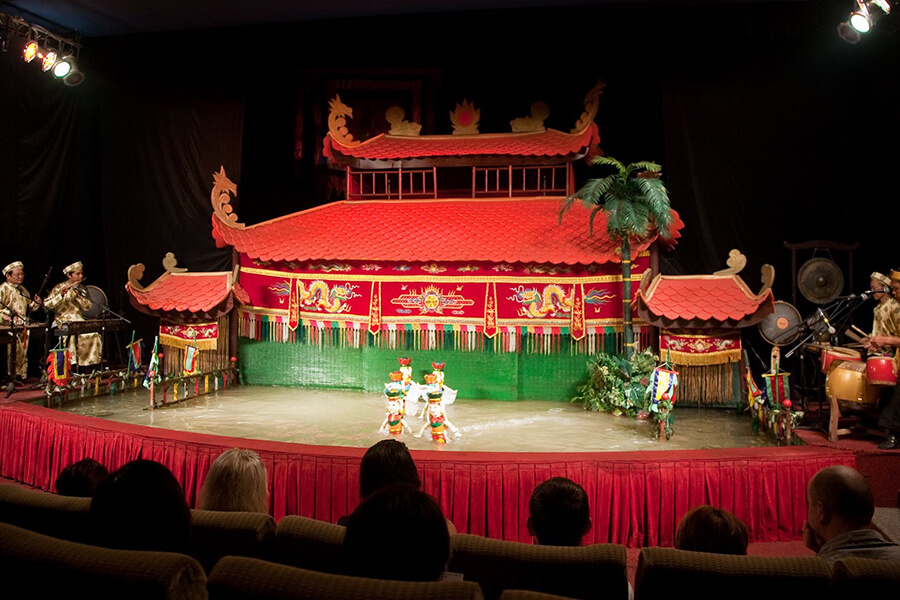
Puppets are a type of “actors” who help viewers comprehend the ideological and emotional content of the performance. Part of he puppet’s body floats above the water to represent the character, while another part submerged below the water surface, keeping the puppet floating above. It’s point where controller installed for the puppets to move.

Tễu – one of the most prominent puppets
The puppets entering and exiting the stage through the curtain by walking under the feet and then emerging or opening the curtain to exit. The controller and control techniques in water puppetry create the actions of the water puppets on stage, which is the key to the art of water puppetry.

An artist is demonstrating how a puppet works
The water puppeteer stands in the backstage to control the puppet. They manipulate each pole, rope, jump… or jerk the puppet using a string system arranged outside or underwater. The success of the water puppetry mainly depends on the movements of its body, its dramatic actions… The show is very bustling with lyrics, drums, gongs, horns, and mouse cannons, fireworks ascended into the sky, in shimmering light and fanciful smoke.

Water puppetry is a skillful game that uses movements as a language of expression. Water puppetry is closely associated with music like the art of dance. Music controls the speed, keeps the rhythm, guides the movements, creates the atmosphere with traditional rhythms playing the main role of water puppetry.

Water puppetry music often uses traditional music, Northern Delta folk songs.
Water puppet show in Vietnam today
In 1992, Thang Long Puppet Theater restored 17 water puppets to revitalize water puppets nationwide including: Bật cờ; Chú Tễu; Múa rồng; Em bé chăn trâu; Cày cấy; Cậu ếch; Bắt vịt; Đánh cá; Vinh quy bái tổ; Múa sư tử; Múa phượng; Lê Lợi hoàn gươm; Nhi đồng vui chơi; Đua thuyền; Múa lân; Múa tiên; Tứ linh.
Currently, there are 6 professional puppet art troupes in central Vietnam, Hanoi, Hai Phong, Ho Chi Minh City, Dak Lak, and Quang Tri province. There are also dozens of water puppet villages in many localities of the Red River Delta.
Over the years, many Vietnamese water puppet troupes have participated in several international puppet festivals that have won many high awards and have attracted the attention of audiences from many countries. With the efforts of Vietnam’s water puppet industry, this art is being protected and developed to deserve its stature in the national cultural heritage.
- Don’t miss our Water Puppet Show-Cyclo & Dinner On Cruise when you’re in Ho Chi Minh City.
Source: collected by An




